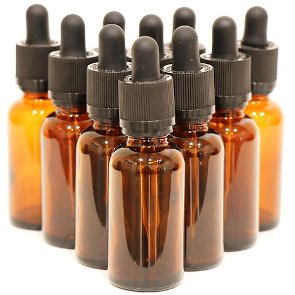4 Pairs of Skincare Ingredients You Should Never Mix
 When you choose skincare products, you probably pay attention to their active ingredients to figure out what this or that product does. But do you know that some of the popular active ingredients should never be mixed together because their combined effect can be bad for your skin? Check out our list of skincare ingredients that shouldn’t be paired together.
When you choose skincare products, you probably pay attention to their active ingredients to figure out what this or that product does. But do you know that some of the popular active ingredients should never be mixed together because their combined effect can be bad for your skin? Check out our list of skincare ingredients that shouldn’t be paired together.Retinol/Retinoids + AHAs/BHAs
Alpha- and beta-hydroxy acids (glycolic, salicylic, lactic, citric, mandelic acids) promote exfoliation by dissolving the substance that makes dead cells stick to your skin. They are a common ingredient in chemical peels. Retinol is a form of vitamin A that is used in cosmetics as a skin conditioner and anti-acne agent. Although it doesn’t exfoliate like hydroxy acids, it has some peeling effect. Mixing retinol with acids can result in skin dryness and irritation because these ingredients can be harsh on the skin individually, so naturally they’re even harsher when combined together.
Check this out: Pros and Cons of Using Salicylic Acid for Acne-Prone Skin
Vitamin C + AHAs/BHAs/Retinol
Most people associate the word “vitamin” with something nourishing, but things aren’t that simple. Vitamin C is actually in acid; its chemical name is ascorbic acid. It makes the skin’s pH more acidic, and using harsh ingredients like hydroxy acids or retinol on top of it can be very irritating to your skin. In addition, the combination of vitamin C and retinol can make your skin more photosensitive, increasing the risk of UV damage.
Check this out: 5 Effective Ingredients in Anti-Wrinkle Creams
AHAs + BHAs
Technically, alpha- and beta-hydroxy acids can be mixed together for a more pronounced exfoliating effect. For example, the famous Jessner peel contains lactic acid (AHA) and salicylic acid (BHA) among other ingredients. However, this doesn’t mean that you can simply take two random acids and use them together to see if they would work, basically making yourself a guinea pig. Hydroxy acids should be mixed by beauticians or dermatologists who know what they’re doing. Experimenting with them at home can lead to severe skin irritation or even chemical burns.
Check this out: The Pros and Cons of the Jessner Peel
Benzoyl Peroxide + Hydroquinone
Benzoyl peroxide is a bactericidal agent that is used to treat mild to moderate acne. Hydroquinone is used in skin whitening agents due to its ability to reduce skin pigmentation. Benzoyl peroxide can cause dryness and irritation until your skin develops tolerance, and adding hydroquinone to the mix will only make things worse. In addition, using hydroquinone together with peroxides may cause skin staining. Luckily, you can remove these stains simply by washing your face this soap, but this is still unpleasant.
Check this out: 5 Effective Ingredients for Skin Whitening
Breadcrumbs
Filters
- Face
Tags
Related Articles
- 5 Ingredients to Look for in a Face Serum, Botanical Ingredients in Cosmetics and Their Benefits, 4 Ingredients to Avoid in Products for Acne-Prone Skin, 5 Ingredients to Avoid in Makeup Products